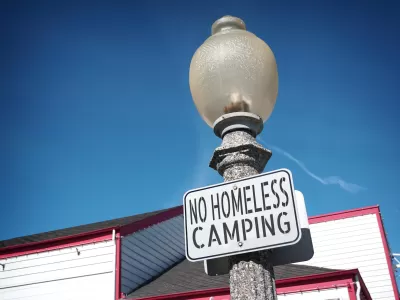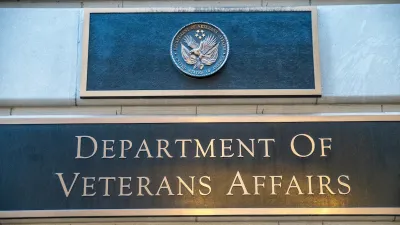A new study shines a light on the connection between homeless outreach teams and policing, and examines why so many cities still use resident complaints to guide their response to the homelessness crisis.

The way to resolve homelessness is to provide people with housing. But many cities continue to use punitive approaches, including deploying police to clear encampments. These policies can and often do coexist with ostensible “services,” sometimes introduced through city-run homeless outreach teams. Why do so many American cities seem vexed when it comes to homelessness, promising to take a compassionate approach while simultaneously framing unhoused people as a threat to public safety?
A big reason for this is that complaint-driven policies prevail in many cities despite being antithetical to resolving homelessness. Mayors and other political figures fear community blowback, and rather than focusing on the real problem—that people are experiencing homelessness—mayors instead adopt policies designed to placate people who are housed and who do not wish to see unsheltered street homelessness.
These complaint-driven policies, centered around deploying police or sanitation workers to places where public encampments are reported, are oriented around “solving” the problem of visible, unsheltered homelessness and persistent encampments. The forced clearing of encampments—often referred to as “sweeps”—can lead to lost or discarded identification, clothing, medications, or other critical belongings. It can disperse people far from their support network, including family who can check up on them or social workers familiar with their cases. It can also lead to arrests or confrontations with police that can exacerbate their houselessness long-term.
This type of policy is nominally connected to services, until unhoused people discover that the services—including permanent housing or social supports—don’t exist, were not what was promised, or come with curfews and other restrictions that cause them to return to the street in frustration. The end result is that homelessness persists, even grows, and that trust between people living on the street and the city governments purportedly offering them services erodes.
A new report from Boston University, Cornell, and a nonprofit, Community Solutions, reveals the extent of punitive and complaint-driven policies within mayors’ offices and city governments across the country. Building on a 2021 survey of mayors and a previous report on the impact of zoning on homelessness, which found that housing policies are often disconnected from homelessness policies, the report’s authors looked at homeless outreach teams across the country, tracking what their goals and missions are and how they operate.
The report reveals that 76 percent of homeless outreach teams in the nation’s 100 largest cities involve the police. And 59 percent of the outreach teams studied are designed to enforce ...
See the source article below to continue reading.
FULL STORY: Sweeps Aren’t Outreach—Policing Homelessness Still Doesn’t Work

Trump Administration Could Effectively End Housing Voucher Program
Federal officials are eyeing major cuts to the Section 8 program that helps millions of low-income households pay rent.

Planetizen Federal Action Tracker
A weekly monitor of how Trump’s orders and actions are impacting planners and planning in America.

Ken Jennings Launches Transit Web Series
The Jeopardy champ wants you to ride public transit.

Rebuilding Smarter: How LA County Is Guiding Fire-Ravaged Communities Toward Resilience
Los Angeles County is leading a coordinated effort to help fire-impacted communities rebuild with resilience by providing recovery resources, promoting fire-wise design, and aligning reconstruction with broader sustainability and climate goals.

When Borders Blur: Regional Collaboration in Action
As regional challenges outgrow city boundaries, “When Borders Blur” explores how cross-jurisdictional collaboration can drive smarter, more resilient urban planning, sharing real-world lessons from thriving partnerships across North America.

Philadelphia Is Expanding its Network of Roundabouts
Roundabouts are widely shown to decrease traffic speed, reduce congestion, and improve efficiency.
Urban Design for Planners 1: Software Tools
This six-course series explores essential urban design concepts using open source software and equips planners with the tools they need to participate fully in the urban design process.
Planning for Universal Design
Learn the tools for implementing Universal Design in planning regulations.
Ada County Highway District
Clanton & Associates, Inc.
Jessamine County Fiscal Court
Institute for Housing and Urban Development Studies (IHS)
City of Grandview
Harvard GSD Executive Education
Toledo-Lucas County Plan Commissions
Salt Lake City
NYU Wagner Graduate School of Public Service





























